As a cost analyst, one of the most common questions I receive from homeowners is how much it costs to run a dryer. The answer to this question can vary based on several factors, including the type of dryer, its age, and the frequency of use. However, understanding the estimated cost of running a dryer can help homeowners make informed decisions about their energy usage and budget accordingly.
The cost of running a dryer is determined by both electricity usage and gas consumption (if applicable). According to the U.S. Department of Energy, an electric dryer typically uses between 2.5 and 6 kilowatt-hours (kWh) per load, while a gas dryer may use between 0.15 and 0.25 therms per load. These figures may not seem significant on their own but can add up quickly over time. By taking into account other variables such as local energy prices and usage patterns, we can provide homeowners with an accurate estimate of how much it costs to run their specific dryer model.
Types Of Dryers
Dryers come in various types, each with its unique features and specifications. Some of the common types include ventless and vented dryers, electric and gasoline dryers, Energy Star and non-Energy Star-rated dryers, front-loading and top-loading dryers, stackable and side-by-side dryers, portable and stationary dryers.
When it comes to ventless vs. vented dryers, the primary difference lies in how they dispose of moisture from clothes. Vented models use a venting system that directs moist air outside through an exhaust duct while ventless models recycle warm air to remove moisture from clothes. Electric vs. gasoline dryers operate differently based on their power source. Electric models run on electricity while gasoline or gas-powered ones rely on propane or natural gas as fuel.
Energy Star-rated appliances are designed to conserve energy by reducing water usage and using less electricity or gas. Non-Energy Star rated machines are more affordable but may cost more to operate in the long term. Front-loading vs. top-loading washers have different designs that affect their efficiency levels during operation. Front loaders use less water and detergent but require bending over to load the machine while top loaders are easy to load but consume more water.
Stackable vs. side-by-side washing units also come with different features that make them suitable for specific spaces or needs. Stackable models save space by stacking one unit on top of another while side-by-side units sit next to each other. Portable washers can be carried around easily, making them ideal for small apartments or camping trips, while stationary washers are permanent fixtures in homes or laundry rooms.
Moving into the next section about the age of the dryer, it is essential to consider how long a dryer has been in use before determining its operating cost relative to newer models.
Age Of Dryer
The age of a dryer can have a significant impact on its running cost. Over time, the efficiency of the machine may deteriorate, and it may consume more energy to perform the same task. According to Consumer Reports, dryers typically last between 10-13 years, after which they start to wear out and become less efficient. Therefore, older dryers are likely to be more expensive to run than newer models.
Dryer maintenance is crucial in ensuring that your appliance continues to function optimally for as long as possible. Regular cleaning of lint filters and checking for blockages in the venting system can help improve the dryer’s efficiency and reduce energy consumption. If you notice any issues with your dryer, such as strange noises or longer drying times, it may be time to call a professional technician for repairs.
Repairing old dryers can be an option if you’re trying to save money on replacement costs. However, it’s important to note that repairing an old dryer may not always be cost-effective in the long run. Repairs can add up over time, especially if you need them frequently. Additionally, older machines are generally less efficient even after being repaired, so they will continue to increase your energy bills.
- Regular maintenance can extend the life of your dryer
- Replacing an old dryer with a newer model can significantly lower operating costs
- Professional repairs should only be considered if cost-effective in the long-term
- Investing in an energy-efficient dryer can save you money on utility bills
Moving forward into our next section about frequency of use…
Frequency Of Use
Short-term use of a dryer typically involves shorter drying cycles and lower temperature settings, thus resulting in lower energy costs. Long-term use of a dryer typically involves longer drying cycles and higher temperature settings, thus resulting in higher energy costs. An analysis of the frequency of use and the settings associated with short-term vs. long-term use can help to determine the cost associated with running a dryer. The cost associated with running a dryer can vary significantly depending on the frequency of use and the settings associated with the drying cycle.
Short-Term Use
When it comes to short-term use of a dryer, the cost can vary depending on several factors. Typically, the cost to run a dryer for one cycle ranges from 15 to 45 cents, depending on the energy efficiency of the appliance and local utility rates. However, there are ways to reduce this expense by implementing energy-saving tips.
One way to reduce expenses when using a dryer is by ensuring that it is loaded correctly. Overloading a dryer can cause it to work harder and therefore use more energy. Additionally, cleaning the lint filter after each use can improve airflow and reduce drying time, ultimately leading to less energy usage. Another useful tip is to avoid running the dryer during peak hours when electricity prices may be higher.
Ultimately, reducing expenses when using a dryer requires being mindful of how often it is used and how efficiently it operates. By following simple energy-saving tips such as adjusting load sizes and cleaning filters regularly, users can significantly decrease their short-term costs associated with running a dryer.
Long-Term Use
Moving on to the topic of long-term use, it is essential to consider the cost associated with running a dryer over an extended period. As mentioned earlier, the energy efficiency of a dryer plays a significant role in determining its short-term costs. However, in the long run, investing in energy-efficient models can save users a substantial amount of money. Energy-efficient dryers use less electricity, resulting in lower utility bills and reduced environmental impact.
Furthermore, frequent use of a dryer can lead to wear and tear, which ultimately affects its performance and lifespan. Regular maintenance such as cleaning lint filters and checking for clogs can help extend a dryer’s life and prevent costly repairs. Additionally, proper installation and ventilation are crucial for optimizing a dryer’s efficiency and reducing energy consumption.
In conclusion, while short-term costs associated with using a dryer can vary based on several factors such as load size and peak hours usage, it is equally important to consider long-term expenses. Investing in energy-efficient models and regular maintenance can significantly reduce costs while also having a positive impact on the environment. By following these cost-saving tips and being mindful of frequency of use, individuals can utilize their dryers efficiently without breaking the bank.
Electricity Usage
Electricity cost is a significant factor in determining the overall cost of running a dryer. The cost of electricity varies depending on your location, but on average, it costs $0.12 per kilowatt-hour (kWh) in the United States. The energy consumption of a dryer can range from 1.5 kWh to 5 kWh per load, depending on the dryer’s age and efficiency.
To calculate how much it costs to run your dryer, you need to know its energy consumption rate and how many loads you dry each month. For instance, if your dryer consumes 3 kWh per load and you dry two loads per week for four weeks in a month, your monthly electricity cost would be around $17.28 (3 x 2 x 4 x $0.12). However, this is just an estimate as electricity rates vary among states and power companies.
Reducing energy consumption not only saves money but also reduces greenhouse gas emissions that contribute to climate change. You can save energy by using a newer and more efficient dryer or by cleaning the lint filter after each cycle to improve airflow. Additionally, consider air-drying clothes instead of using a dryer when possible or using your dryer during off-peak hours when electricity rates are lower.
Transition: While electricity usage is one factor in determining the cost of running a dryer, gas consumption is another significant aspect to consider.
Gas Consumption
The cost of operating a gas dryer will depend on the usage and efficiency of the dryer. Higher efficiency gas dryers may cost more upfront, but can result in lower fuel costs over time due to their reduced gas consumption. It is important to consider the total cost of ownership, including energy costs, when purchasing a gas dryer. Comparing the energy efficiency ratings of each model can be helpful in determining which dryer is the most cost-effective choice.
Gas Dryer Costs
Gas dryers are a popular choice for households that require frequent washing and drying of clothes. Unlike electric dryers, gas dryers use natural gas or propane to generate heat which enables them to dry clothes faster and more efficiently. Although gas dryer costs may be relatively higher than their electric counterparts, they are considered to be more cost-effective in the long run.
To maintain the efficiency of a gas dryer, regular maintenance is necessary. This includes cleaning the lint filter after every cycle and checking the venting system for any blockages or damage. Gas dryer maintenance also involves inspecting and replacing any worn-out parts such as belts, rollers, or bearings. By carrying out these simple tasks, one can avoid costly repairs and ensure that the dryer runs smoothly for longer periods of time.
Efficiency improvements can further reduce gas dryer costs by improving energy consumption. One way of achieving this is by purchasing a high-efficiency gas dryer with an Energy Star rating. These types of dryers consume less energy per cycle than conventional models, resulting in lower utility bills over time. Another option is to install a smart thermostat that automatically adjusts the temperature settings based on load size and moisture levels. By adopting these measures, households can significantly cut down on gas consumption while enjoying efficient drying performance from their gas dryer.
Gas Dryer Efficiency
As a cost analyst, it is important to consider the efficiency of gas dryers in relation to gas consumption. While gas dryers may be more costly upfront compared to electric dryers, they are considered more cost-effective in the long run due to their energy efficiency. However, to maintain this efficiency, regular dryer maintenance is necessary. This includes cleaning the lint filter after every cycle and checking the venting system for any blockages or damage.
Proper ventilation requirements must also be met for optimal gas dryer efficiency. A well-vented dryer can significantly reduce energy usage as it allows hot air to circulate freely, resulting in faster drying times. On the other hand, blocked or damaged vents can cause longer drying times and higher energy consumption. By ensuring proper ventilation and carrying out regular maintenance tasks such as inspecting and replacing worn-out parts, households can maximize the energy efficiency of their gas dryers.
Another way to improve gas dryer efficiency is by investing in high-efficiency models with an Energy Star rating or installing a smart thermostat that automatically adjusts temperature settings based on load size and moisture levels. These options can further reduce utility bills while providing efficient drying performance from gas dryers. As such, households should consider these measures when looking to minimize their overall gas consumption while still being able to enjoy the benefits of using a gas dryer.
U.S. Department Of Energy Guidelines
Gas Consumption plays a vital role in determining the cost of running a dryer. However, it is not the only factor that influences this cost. Energy-efficient options are available in the market which can significantly reduce the amount of energy required to run a dryer. These options not only save money but also have a positive environmental impact.
To reduce dryer costs, consider the following three options:
- Use a drying rack or line dry your clothes: This option relies on natural air and sunlight for drying clothes instead of using electricity or gas.
- Upgrade to an energy-efficient dryer: An energy-efficient dryer uses less energy to do its job than standard dryers, saving you money on utility bills over time.
- Clean your lint filter regularly: A clogged lint filter restricts airflow, making your machine work harder than necessary and increasing your overall costs.
The U.S Department of Energy guidelines suggest that electric dryers are generally more efficient than gas dryers as they use electricity directly from power plants without additional conversion steps. However, gas dryers typically cost less to operate due to lower fuel prices. The choice between electricity vs. gas costs depends on various factors such as local fuel prices, usage patterns, and availability of energy-efficient options.
By considering these factors along with gas consumption, individuals can make informed decisions about running their dryers efficiently and effectively while minimizing their environmental impact and saving money in the long run.
Electricity Vs. Gas Costs
When it comes to running a dryer, one of the key factors to consider is the cost of energy. In particular, there are two main options: electricity and gas. While both can be effective ways to power a dryer, they each come with their own set of costs and benefits. Understanding these differences is essential for anyone looking to make an informed decision about how best to run their dryer.
In terms of cost, gas dryers tend to be cheaper than electric ones. This is because natural gas is typically less expensive than electricity in most parts of the country. However, it’s worth noting that gas dryers often require more upfront investment due to installation costs and the need for a dedicated gas line. Additionally, while gas may be cheaper in some areas, it’s not always universally true – local energy prices can vary widely depending on where you live.
Another factor to consider when comparing electric vs. gas dryer costs is energy efficiency and environmental impact. Generally speaking, electric dryers tend to be more efficient than their gas counterparts. This means that they use less energy overall and may end up being cheaper in the long run despite higher electricity costs. Additionally, electric dryers don’t produce any emissions or pollutants during operation, making them a better choice for those concerned about their environmental impact.
Overall, choosing between an electric or gas dryer will depend on your individual circumstances and priorities. Factors like installation costs, local energy prices, and environmental impact should all be taken into account when making your decision. By weighing these factors carefully and considering your own needs and preferences, you can make an informed choice that works best for you and your household.
Moving forward into local energy prices…
Local Energy Prices
Understanding local energy prices is crucial to determining the cost of running a dryer. The cost of electricity per kilowatt-hour (kWh) varies depending on the location and the provider. For instance, in the United States, the average price of residential electricity was 13.31 cents per kWh as of August 2021, while the average price in Canada was around 18.59 cents per kWh. It is important to note that these prices may fluctuate depending on several factors such as demand, supply, and government regulations.
There are ways to reduce energy costs when using a dryer at home. Energy-saving tips such as air-drying clothes or using a clothesline can significantly lower energy bills by removing the need for a dryer altogether. However, if air-drying is not possible, investing in an energy-efficient appliance can be a cost-effective solution. Energy-efficient dryers use less energy than traditional models and can save up to 20% on energy bills.
In conclusion, knowing local energy prices is vital in determining the overall cost of running a dryer at home. Using energy-saving tips such as air-drying clothes or investing in an energy-efficient appliance can help reduce costs significantly. In addition, being mindful of usage patterns such as running full loads and cleaning lint filters regularly can also contribute to lowering energy bills over time.
Next section: Usage Patterns
Usage Patterns
As discussed in the previous section, local energy prices are a significant factor to consider when calculating the cost of running a dryer. However, there are other alternatives to using dryers that can significantly reduce energy costs. One alternative is line drying, which is the traditional method of drying clothes by hanging them outside on a clothesline. This method not only saves energy but also reduces the environmental impact of excessive dryer use.
Excessive use of dryers can have a significant impact on the environment due to their high energy consumption and carbon emissions. According to research, an average dryer emits approximately 4.4 pounds of carbon dioxide per load. This amount may seem small, but it adds up over time and contributes significantly to global warming. Therefore, it is crucial to consider alternatives like line drying or using drying racks indoors to reduce our carbon footprint.
As a cost analyst, it is essential to calculate the overall cost of running a dryer accurately. By considering all factors such as local energy prices and environmental impact, we can help individuals make informed decisions about their usage patterns. Through this analysis, we can encourage people to explore alternative methods that not only save money on their energy bills but also have a positive impact on our planet’s health.
Transitioning into calculating the cost, it’s necessary to keep in mind that every individual’s circumstances are different and require personalized calculations based on factors such as frequency of use and type of dryer used.
Calculating The Cost
To calculate the cost of running a dryer, it is important to take into account various factors such as energy consumption and environmental impact. To begin with, the cost of running a dryer depends on its energy efficiency rating. Dryers with higher energy efficiency ratings consume less electricity, therefore reducing the overall operating cost.
Energy saving techniques can further reduce the cost of running a dryer. One way to save energy while using a dryer is by ensuring that clothes are thoroughly wrung out before being placed in the machine. This will reduce the amount of time needed for them to dry, thus reducing the energy consumption of the dryer. Another technique is to clean out the lint filter regularly, as clogged filters can impede airflow and cause increased energy usage.
It is also important to consider the environmental impact when calculating the cost of running a dryer. Dryers consume a significant amount of electricity, which contributes to greenhouse gas emissions and climate change. Choosing an energy-efficient dryer and implementing energy-saving techniques can help mitigate these effects and reduce one’s carbon footprint.
Factors That Affect Cost
Moving on to the cost of running a dryer, one cannot determine an exact figure as it depends on various factors such as energy consumption, usage frequency, and maintenance. However, there are ways to estimate the cost by calculating the energy consumption rate of the specific dryer model and the local electricity rates. On average, it can cost anywhere from 15 cents to 50 cents per load of laundry.
To reduce costs associated with running a dryer, regular maintenance is crucial. This includes cleaning the lint filter after every use, clearing the exhaust vent periodically and ensuring that there is proper airflow. A clogged vent or dirty filter can cause longer drying times, leading to more energy consumption and higher electricity bills. It is also important to ensure that the dryer is not overloaded as this can cause damage to both the machine and clothes.
Energy-saving tips can also be implemented to reduce costs associated with running a dryer. One such tip is to opt for a high-efficiency model that consumes less energy than traditional models. Another tip is to air-dry clothes on a clothesline or drying rack instead of using a dryer whenever possible. These simple steps can go a long way in reducing electricity bills while still maintaining clean and dry clothes.
In order to further reduce costs associated with running a dryer, there are additional tips that one can implement in their daily routine. These tips include using lower heat settings for lighter materials like cotton and avoiding over-drying clothes as this wastes energy unnecessarily. By implementing these changes in combination with regular maintenance and energy-saving tips mentioned earlier, one can significantly decrease their overall costs associated with running a dryer without sacrificing their laundry needs.
Tips For Reducing Costs
There are several ways to reduce the costs associated with running a dryer. One of the most effective methods is to reduce wear and tear on the machine by using it less frequently. This can be accomplished by drying clothes outdoors, hanging them on a clothesline, or using a drying rack indoors. Another way to reduce wear is to clean the lint filter after every use, which helps improve drying efficiency.
Drying efficiency can also be improved by using appropriate settings and load sizes. Overloading the dryer can lead to longer drying times and increased energy consumption. It is important to only dry items that are appropriate for the machine’s capacity. Additionally, using settings such as “low heat” or “air dry” can be more energy-efficient than high-heat options.
Another way to reduce costs associated with running a dryer is by making sure that it is well-maintained. Regular maintenance such as cleaning the vent system and checking for any mechanical issues can help ensure that the machine operates at maximum efficiency.
- Five tips for reducing dryer costs:
- Clean lint filter after every use
- Dry clothes outdoors or on a clothesline
- Use appropriate settings and load sizes
- Consider air-drying instead of high-heat options
- Regularly maintain your dryer
Reducing costs associated with running a dryer not only benefits your wallet but also has positive effects on energy efficiency and sustainability efforts. By following these tips, you can reduce wear and tear on your machine, improve drying efficiency, and ultimately contribute to a greener planet. In the next section, we will explore the benefits of energy efficiency in more detail.
Benefits Of Energy Efficiency
The benefits of energy efficiency cannot be overstated, especially when it comes to cost savings. By implementing energy saving tips and cost effective measures, individuals can save a significant amount of money on their utility bills. In addition to the financial benefits, energy efficiency also helps reduce carbon emissions and conserve natural resources.
One simple way to improve energy efficiency is by using appliances that are certified by Energy Star. These appliances are designed to use less energy while still providing the same level of performance as non-certified models. For example, using an Energy Star certified dryer can save up to 20% on energy costs compared to a standard model. Additionally, using a drying rack or line drying clothes can further reduce energy consumption.
Other cost effective measures include adjusting thermostat settings, sealing air leaks in windows and doors, and installing low-flow showerheads and faucets. These changes may seem small, but they can add up to significant savings over time. In fact, according to the U.S. Department of Energy, making these types of improvements can save homeowners up to 30% on their annual utility bills.
By implementing these energy saving tips and cost effective measures, individuals can not only save money but also contribute towards a more sustainable future. In comparison to other appliances in the home, such as refrigerators or washing machines, dryers have the potential for significant energy savings due to their high usage rates. Therefore, it is important for individuals to prioritize energy efficiency when selecting new appliances or making upgrades to their home’s infrastructure.
Comparison To Other Appliances
Comparing the cost of running a dryer to that of other household appliances is essential in determining the most efficient and cost-effective way to do laundry. When compared to washing machines, dryers consume more energy, making them more expensive to operate. On average, running a dryer for an hour costs about $0.36, while washing machines use approximately $0.21 per load.
In comparison to competitors such as gas-powered dryers, electric dryers are less efficient and have higher operating costs. Gas-powered dryers use natural gas instead of electricity and are generally cheaper to run than electric models. However, they require a gas line installation and may not be available in all areas.
The impact of dryers on the environment cannot be overlooked either. Dryers consume a considerable amount of energy and emit carbon dioxide with every cycle. By using alternative methods such as air-drying or line-drying clothes, individuals can significantly reduce their carbon footprint and save money on their electricity bills. It’s worth noting that even if you prefer using a dryer, selecting an energy-efficient model can help minimize both your environmental impact and your utility bill.
Transition: Now that we have discussed the cost comparison between dryers and other appliances as well as their impact on the environment let’s dive into final thoughts on ways to optimize your laundry routine for maximum efficiency and savings.
Conclusion And Final Thoughts
As we have seen in the previous section, dryers are one of the most energy-intensive appliances in a household. However, it is important to note that the cost of running a dryer varies depending on several factors such as the type and size of dryer, frequency of use, and local energy rates. Coincidentally, these factors also play a significant role in determining the environmental impact of using a dryer.
When it comes to calculating the cost of running a dryer, one must consider not only the electricity consumption but also the long-term savings that can be achieved through efficient usage. For instance, opting for an Energy Star certified dryer can result in significant savings on energy bills over time. Additionally, reducing drying time by properly cleaning lint filters and avoiding overloading can further reduce energy consumption and costs.
In conclusion, while dryers may seem like an expensive appliance to operate, there are ways to minimize their environmental impact and achieve long-term savings. As cost analysts, it is our responsibility to educate consumers on these options and help them make informed decisions when it comes to their household appliances. By doing so, we can not only serve our clients but also contribute towards building a sustainable future for all.
Conclusion
The cost of running a dryer can vary significantly based on various factors, including the type of dryer, its age, and frequency of use. While electric dryers consume more electricity than gas dryers, the latter requires a steady supply of natural gas, which could affect costs. However, purchasing energy-efficient models and adopting energy-saving practices could reduce costs.
As a cost analyst, it is essential to consider the benefits of investing in energy-efficient dryers. These models may be pricier but can save significant amounts in the long run. Additionally, drying clothes in full loads and cleaning out lint filters regularly can reduce energy consumption. Finally, comparing the costs of running other appliances such as dishwashers or washing machines could provide a better perspective on saving money on utility bills.
In conclusion, while it might seem daunting to estimate the costs associated with running a dryer accurately, it is not impossible. By considering various factors such as type and age of dryer and electricity usage versus gas consumption, one can make an informed decision about cost management. Adopting energy-saving practices and investing in energy-efficient models can save money over time while also contributing to environmental sustainability. As cost analysts working towards financial efficiency for households or businesses, it is crucial to factor these considerations into our calculations for optimal results.
Image Credits
- “dryer” by fuzzysaurus (featured)

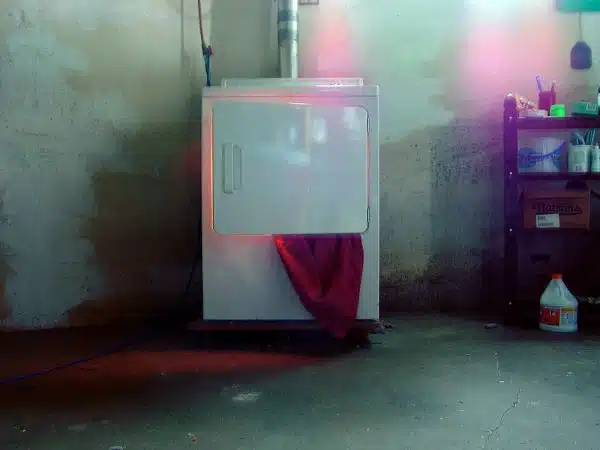

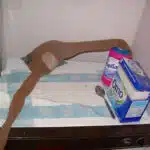




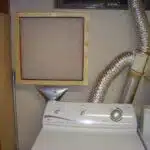




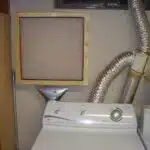


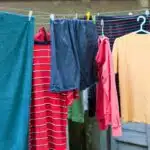




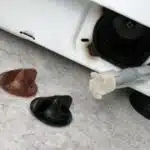
![How To Wash And Care For White Clothes 22 The only genuine borax soap cleanses hygienically saves the clothes and hands. 20 Mule-Team brand Boraxo white laundry soap [front]](https://green-life.blog/wp-content/uploads/2023/05/YDXLLCovnOjq-150x150.jpg.webp)






